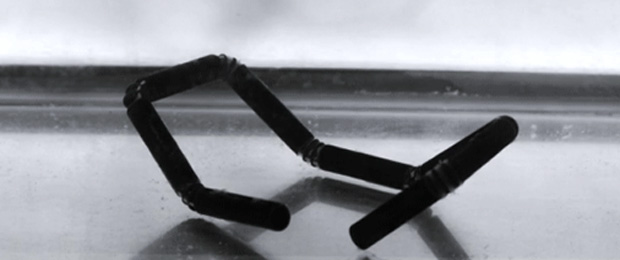We have talked a lot about the importance 3D printing will have in the future. This technology undoubtedly offers us great advances in many different fields. Medicine, education and the automotive sector are just some of the areas where 3D printing promises a revolution.
But the technological change that 3D printing is bringing has only just begun. The manufacture of any product imaginable is not yet a reality in our society, but who knows – maybe in less time than we think, we will all have a 3D printer to produce whatever we want.
And while 3D printing has only just shown us a small part of what the future may hold in store, history shows us that the revolution of science and technology is unstoppable. As incredible as it may sound, 4D printing has just arrived, only seconds after 3D printers have taken off.
4D printing’s time has come
Skylar Tibbits is responsible for 4D printing being on everyone’s lips. This architect, who studied at the University of Philadelphia, now works at the prestigious Massachusetts Institute of Technology. It was there where he began training in computational science and design. He is currently teaching architecture to students at MIT.
One of the subjects he teaches is rather curious because it partially summarizes the idea of what 4D printing can do. Tibbits has called it «How to Make (Almost) Anything». The knowledge accumulated in his experience as a teacher has reached the general public thanks to a TED conference that Tibbits gave in Long Beach last February. In his talk he introduced the advantages that 4D printing might bring to our lives.
The idea of 4D printing is surprising, to say the least. To work on this new, innovative project Tibbits uses a Stratasys 3D printer, designed to make materials with multiple layers. Then what is used are structures with the capability of directly transforming themselves in one way or another. In other words, the printing is not new per se, but rather it is the self-assembly that makes the new manufacturing proposed by Tibbits important.
In an interview, Tibbits suggested that, in the future, we might be able to «design something, print it and then it would evolve on its own, in design and structure». This is quite surprising, although so far it has only been tested with plastic tubes that can self-assemble when immersed in water. Tibbits explains this in his lecture, and we can see it in more detail in the video below:
Modern and innovative 4D printing could enable us in the future to build nano-robots, for example, that may be able to self-model and then be used to transport anti-tumour drugs to the malignant cells of patients with cancer. This may sound like science fiction, but in fact it is a research project on which the famous company Autodesk is working under the auspices of MIT itself.
The Cyborg project, led by Carlos Olguin, and in which Tibbits is also involved, promises to test 4D printing. Who knows if, in the future, this new technological revolution will form part of our every-day lives. We may be able to manufacture and model any structure or component we can imagine.
Image | The Guardian









